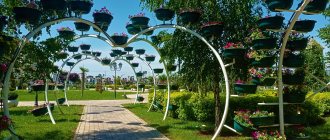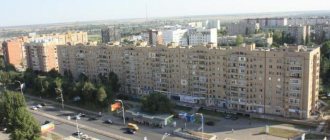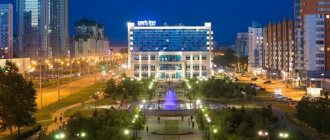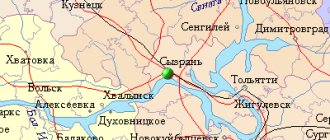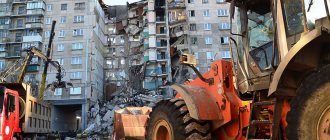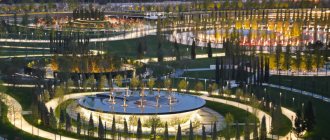Festive events are held with the support of the locality administration. On this day, a festival of national cultures is held. The award ceremony honors the winners of children's folklore groups. Championships are held in football, athletics, chess, and car racing.
The arts and crafts fair introduces visitors to the works of folk craftsmen. Museums open their doors to exhibitions telling about important historical events. Children are entertained with competitions and games. Brass bands perform famous compositions.
Popular groups are invited. The holiday ends with colorful fireworks.
In 2021, Tomsk City Day is celebrated on June 7. The date is fixed in the charter.
City information
Tomsk is the administrative center of the region of the same name in the Russian Federation. It is located in the east of Western Siberia, off the coast of Tom. The economy is represented by enterprises in the petrochemical, energy generating, food, and construction industries. There are service and trade companies operating.
Important highways pass near the settlement: M53 “Baikal”, P400, P398. There is a major railway junction of the Trans-Siberian Railway. Bogashevo International Airport is located nearby. There are vocational educational institutions, universities and their branches. The population is more than 560 thousand people.
Prices in hotels and hotels in Tomsk
A private tour guide in Tomsk, Daria Pavlova, told altapress.ru about where in the city it is cheapest to stay and where it is more expensive.
So, according to Daria, it’s cheaper to stay in a hostel in Tomsk. Cost from 360 rubles per night (accommodation in a 10-bed dormitory room).
Tomsk
Ekaterina Zholnerova.
Daria Pavlova, private tour guide in Tomsk:
A good hostel in terms of price and quality ratio is Moment. It combines the functions of both a hostel and a hotel, depending on what is preferable to the tourist. The simplest accommodation costs from 650 rubles per night. In the hotel, a “standard” room costs from 2.2 thousand rubles for two. Near the railway and bus station.
Next on Daria's list are apartments. Thus, the cost of accommodation in the “First Apart-Hotel” is 2.8 thousand rubles for two. Apartment rental - from 1.2 to 3 thousand rubles per night. It all depends on the location and infrastructure.
In Tomsk you can find hotels from 2.5 thousand rubles per night in a double room, for example in the “Sports Hotel”. There is also a three-star hotel “Abazhur”, where the cost of accommodation starts from 2.7 thousand rubles.
In four-star hotels, the cost per night starts from 4.8 thousand rubles for double occupancy - these are the Gogol Hotel and the Bon Apart Hotel.
Good 4-star hotels: Xander (from 5 thousand rubles for double occupancy), Scandinavia (from 6.2 thousand), Magistrate (from 10 thousand). All hotels are located close to the center or in the very center.
Story
The history of Tomsk begins in 1604. By order of Boris Godunov, a fort was founded, which received the name of the same name. In 1629 it acquired the status of a city. Throughout the 18th century, trade flourished here, thanks to the large transport routes that ran through the settlement. In 1782 he entered the Tobolsk governorship.
At the beginning of the 19th century it became the center of the province. Soon after the discovery of gold deposits, rapid development began in it. Small craft shops, textile and leather industries appeared. A branch of the Trans-Siberian Railway was built nearby. It contributed to the loss of main significance.
The Bolsheviks' rise to power was marked by a confrontation with the White Guard forces. After the end of World War II, new industries were formed.
As part of the Russian Federation, it is experiencing stagnation in many areas of the economy and industry.
Tomsk View on map
Vegetation
On the territory of the city there are a number of green areas (parks, squares, groves, gardens).
Most of them are concentrated in the part of the city located south of Ushayka: Camp Garden, City Garden, Siberian Botanical Garden, University Grove, City Square (on Novosobornaya Square), Buff Garden, park at the end of the street. Elizarovs (before the descent to Baltiyskaya street). There are also several groves in other parts of the city: Mikhailovskaya Grove, birch grove on Kashtak, Solnechnaya Grove at the end of the Irkutsk tract (northeast of the city). In the middle of Kirov Avenue, for most of its length, there is a boulevard. The landscaping of city streets is mainly carried out by the Gorzelenkhoz organization, as well as by individual entrepreneurs. In 2011, half a million rubles were allocated for vertical gardening of streets.
Geographical position
Severe frost (42 °C)
Tomsk is located on the border of the West Siberian Plain and the spurs of the Kuznetsk Alatau on the right bank of the Tom River, 50 km from its confluence with the Ob. The city is located on the edge of the taiga natural zone: to the north there are impenetrable forests and swamps, to the south there are alternating forests and forest-steppes. The distance to Moscow is 3.5 thousand km.
12 km north of Tomsk is the closed city of Seversk, in Soviet times called “Tomsk-7” or, in informal speech, “postal”, “fifth postal”.
The area of the city is 294.6 km. Lev Tolstoy Street in Tomsk runs along the 85th meridian of eastern longitude.
Relief
The relief surface in the city is uneven. Tomsk itself is located in the southeast of the West Siberian Plain. In Tomsk, the following elements of the river valley are distinguished: floodplain, terraces and interfluves of the Tom-Malaya Kirgizka and Tom-Ushaika watersheds.
The Tomyu River is formed by:
| Forms | Width | Relative height (above the river) | Absolute altitude (above sea level) |
| Floodplain | up to 50 m | 3-4 m | |
| Type 1 terraces (Zaozerye) | up to 2200 m | 8-12 m | 80-82 m |
| Type 4 terraces (Stepanovka and Kashtak) | 50—300 m | 65-70 m | 135-140 m |
| Type 2 terraces (main post office) | 250-500 m | 20 m | 90-95 m |
| Type 3 terraces (Voskresenskaya and Lagernosadskaya) | 45—500 m | 45-50 m | 120 m |
The terraces are dissected by ravines and beams. Throughout the entire period of the city's existence, forests were constantly being cut down, roads were being laid, and land was being plowed up for arable land. To protect themselves from floods, people covered the floodplain and the first terrace above the floodplain (Zaozerye). As a result, all this gradually led to the leveling and smoothing of the relief.
However, the city is characterized by a height difference reaching 60–70 m.
“The location of the city in a zone of sharply continental climate, rugged terrain, high groundwater levels, loose rocks that are easily eroded, contribute to the development of ravines and landslides.” Ravines are found in many areas of the city.
The northern, western and southern slopes of Yurtochnaya Mountain are called landslide-hazardous areas. In addition, Kashtak and Voskresenskaya Mountain are surrounded by ravine-dangerous territories. Part of the territory of the southern site of the technology-innovation zone is also considered gully-hazardous. All Cheremoshniki and Tatarskaya Sloboda fall under the category of naturally flooded areas. Most of the Yurt and Resurrection mountains are technogenically flooded.
← previous next →
Pages: ... 17 ...
Add a comment
Comment
Send
Coat of arms
The coat of arms of Tomsk is presented in the form of a French shield. A silver galloping horse is depicted on a green field. The animal's front hooves are raised above the ground, and the mane is developing. The horse is facing to the left of the viewer. It symbolizes power, rapid development, greatness.
The shield is topped with a golden tower crown with five teeth. Below it is a gold ribbon. The motto “THE LABOR AND KNOWLEDGE” is inscribed on it.
The artistic composition was adopted by decision of the Tomsk City Duma No. 503 of November 18, 2003. Goes back to the historical version.
The population of Tomsk in 2021 decreased by almost 8 thousand people
TOMSK, March 17 – RIA Tomsk. Tomsk authorities predicted the city population to be 602.5 thousand people for 2021, but it did not reach 590 thousand people; Natural population decline amounted to 1.8 thousand people, migration – over 6 thousand, according to the draft report of the mayor of Tomsk for 2021, posted on the City Duma website.
The mayor of Tomsk makes an annual report to city Duma deputies. The text of the document is previously discussed in committees, where deputies express their proposals regarding the plans of the municipal government for the coming year. The draft report of the mayor was published on the website of the Tomsk City Duma. The duties of mayor are temporarily performed by Mikhail Ratner.
It follows from the text that in recent years Tomsk has experienced an increase in the urban population, so for 2021 the authorities predicted a figure of 602.5 thousand people, but the figures turned out to be significantly lower.
“As of January 1, 2021, the population in the city of Tomsk was 589,844 people. Natural decline – 1,803 people, migration decline – 6,172 people,” the document says and notes that the working-age population was 370.6 thousand people (62.8%), over working age – 113.2 thousand (19 .2%), younger (up to 15 years inclusive) – 106 thousand people (18%).
It is reported that natural decline in 2021 consisted of 5,100 births and 6,903 deaths. A decrease in the number of births has been recorded in the city since 2021. The fertility rate (the number of children born to 1 woman) in 2021 was 0.95 (4% less than in 2021), and the mortality rate in 2021 increased by 22.3%. One of the reasons for population decline is the spread of COVID 19.
© RIA Tomsk. Taisiya Vorontsova
Over the past 5 years, on average, Tomsk residents have “matured” by a year
“Due to restrictions on the migration movements of citizens introduced to prevent the spread of the coronavirus infection COVID-19, in 2021 a migration loss of Tomsk residents in the amount of 6,172 people was recorded (in 2021, due to migration processes, the population of the city of Tomsk increased by 1,526 people ),” the report says.
At the same time, the intraregional migration decline amounted to 2,416 people (3,840 people arrived, 6,256 people left), interregional - 3,300 people (5,521 people arrived, 8,821 people left), international - 456 people (4,678 people arrived, dropped out - 5,134 people).
It was previously reported that, according to preliminary data, the population of the Tomsk region decreased by 8,755 people in 2021, while the natural population decline amounted to 4,338 people, and the migration decrease amounted to 4,417 people. According to TASS, the population of the Russian Federation in 2020 decreased by 0.5 million people. The last time a similar situation occurred was in 2005, when the country's population decreased by 564.5 thousand people.
Fishing and hunting on the Tom River
This hydrological object is famous for all kinds of fish. The ichthyfauna includes the following species:
- pike;
- crucian carp;
- ruff;
- perch;
- peled;
- muksun;
- Siberian sturgeon;
- grayling;
- lamprey;
- sculpin;
- sterlet;
- chum salmon;
- arctic char.
There were once 29 species of fish living here. But the anthropogenic factor changed everything. Representatives of half of the families listed are almost never caught. Not only has man polluted everything here and scared away the aquatic life. He also shallowed the stream, extracting sand mixture from many water edges. So, pike, crucian carp and perch.
On the Tom River, fishing produces results everywhere except large cities and the industrial sector (with its accompanying emissions). Fishing is also prohibited in 5 water protection zones. The rest of the river is entirely yours. It is worth remembering the rules of spawning (there are spawning grounds here). And also release back the “Red Book” lamprey, Siberian sturgeon, chum salmon, Arctic char, sculpin, taimen. In the dirty pond they became rare fish.
Having talked about the pleasure the Tom River gives to fishermen, let’s finish describing fishing. What about hunting? It is difficult to imagine a more populated river in Siberia than the Tom. Its middle and lower sections are a continuous line of cities, industrial complexes, towns, large villages, hamlets, tourist and fishing bases. The very lower reaches are a complex of nature reserves. Between them there are farms where they shoot only duck, goose, hazel grouse, partridge and wild boar. Shooting in the rest of the zone (residential and “custom” zones), as you understand, is prohibited. As for the upper river episode, some part of it concerns the buffer zone of the Kuznetsky Alatau nature reserve. But everything else belongs to publicly accessible hunting grounds. This is the Republic of Khakassia. Let's talk about her.
Askizsky district (Kharasaban and Kuznetsky Alatau lands) is rich in deer, brown bear, lynx, badger and sable (shooting of all these species is limited). But there is a wolf, a fox, a hare, a squirrel, and a wolverine. Upland game includes partridge, black grouse, capercaillie, hazel grouse and woodcock. Various ducks (except for the red-breasted grebe) and goose are available from the swamp lake. The local Red Book includes flying squirrel, manul, bats, mink, musk deer, birds of prey and owls. Also near-water game: swans, herons, cranes and storks.
Kislovka, Basandaika, Bolshaya Kyrgyzka
The largest river on the left bank of Tomsk is Kislovka. Its total length is 49 km, the catchment area is about 200 sq. km. The river flows into the Tom near the village of Popadeikino, just opposite Seversk. The depth of Kislovka does not exceed thirty centimeters.
In the southern part of the city flows a river with the unusual name Basandaika. Its length is 57 km, of which only four are in Tomsk. The river flows into the Tom within the village of the same name.
The Bolshaya Kyrgyzka River flows on the northern outskirts of the city, separating Tomsk from neighboring Seversk. It flows into the Tom near the Northern Bridge. At the mouth of the river there is an archaeological site - a settlement of the 2nd-1st millennium BC, in which many valuable finds were found.
It is worth mentioning separately those rivers of Tomsk that have not survived to this day. Among them are Igumenka, Larinka, Medichka, Elanka, Oblepikha. Almost all of them were filled up in the middle of the last century.
Tomsk: rivers and lakes
The surface area of all water bodies is 2.% of the total territory of Tomsk. They serve as sources of water for industrial and domestic needs of the urban population. All rivers of the city of Tomsk carry their waters to Tom. The largest of them:
- Ushayka.
- Kislovka.
- Big and Small Kyrgyzstan.
- Basandaika.
Initially, there were several dozen fairly large lakes on the territory of Tomsk. Almost all of them were filled up and destroyed during the 19th-20th centuries. Only a few city lakes were saved from rapid urbanization: Beloe (see photo), Perepet, Zyryanskoye and a number of small nameless reservoirs.
The rivers of Tomsk have always been rich in fish. Sturgeon, muksun, nelma and sterlet are found in the local waters. The banks of local rivers and streams are real berry plantations. Medicinal plants grow next to the thickets of lingonberries, blueberries and blueberries, and in the forests you can collect a lot of mushrooms.
Tomsk Square, 11 pcs.
187
Academician Zuev Square
Fresh education in Tomsk, located near Akademgorodok, and nearby Koroleva and Akademicheskaya streets. Very little time has passed since this public space began to exist on February 17, 2004 under the name of Academician V. Zuev. Physically, the square was formed as a transport ring of Korolev Street and Academic Avenue. The size of the entire zone stretches over 60,000 square meters.
Batenkov Square
The place of foundation is between Gagarin, Sovetskaya, Krylov streets and two lanes - Batenkova and Pionersky. Once upon a time there was an old church here, but it was removed back in the 30s. Moreover, there was even a mini-tomb here. Today, a small but beautiful monument to Batenkov has been erected here, with benches and a place for walking around. Around the site there is noise from trams in all directions.
Dzerzhinsky Square
This is the Kirovsky district of Tomsk, and specifically the area around Kirovka and Dzerzhinsky streets (hence the name). In this case, the tram lines also intersect on both sides. There is a beautiful boulevard adjacent to it. I operate stops for trolleybuses, buses and trams with the same name.
Zhukov Square
It is stationed on Kashtak, where there is Govorova Street and the 79th Guards Division. The territory bears the name of the famous military man Georgy Zhukov, who lived in the USSR. When he turned 100 years old from his birthday, they decided to decorate the square on February 28, 1996 with the name of the commander. But the name didn’t really catch on; people often interpret this area as a “circle at the car market,” due to its direct connection with the Kashtachny car market.
Kirov Square
Mainly at the intersection of Komsomolsky Avenue and Kirov Avenue. From here you can go to the Tomsk I district. The tram network is continued in this part of the city, there is even an additional function for rearranging the route using an arrow.
Horse Square
Initially there was a place for selling horses, then it was designated as a street. “Horse”, then the name grew into “Horse Lane”. By the end of the 19th century, it was given the status of “Horse Square”. Thermal power plant No. 1 is located nearby; a lot of territory has been allocated for construction. There is no market now.
Kukin Square
The basis for the square is Mokrushina Street. The Tomsk Radio Engineering Plant recently operated here. Local officials funny and emotional discovered the wonder of the world on December 14, 2009 and from now on the site is referred to as “Kukina”. Check out the image on the right.
Lenin Square
At first it was called vulgarly “Bazarnaya”, then “Bazarno-Gostinodvorskaya”, and even so “Bogoyavlenskaya”, “Main Bazarnaya”, “Gostinodvorskaya”, “Iverskaya”, “Torgovaya”. Clear formulations, because this is the main street of the city and the entire region! Apparently there were more than enough traders here - they became symbols of the formation of such words. But with ardent communism in 1959, Lenin also began to rule on this main street.
Novosobornaya Square
This is the main place of the city. A New Year tree is put up here, people are constantly walking here. It is civilized and beautiful here in the morning, afternoon and evening. Life is in full swing here in spring, summer, winter and autumn. Legally called through a dash, “Novo-Sobornaya”, is the center of Tomsk. Once upon a time it was simply called one word without the prefix “Novo”. This is the old district of Nizhnyaya Yelan.
station Square
Everything speaks for itself. People walk here and there, cars make similar waves along the road. It is located in the Kirovsky district of Tomsk, ending at Kirov Avenue. Logically, there are bus and train stations nearby. Regarding the name, it is more popular and not legally established.
Salt Square
The square is dissected by Makushina Lane, followed by the street. Pushkin. Once upon a time the name of the site was “Proviantskaya”. Further, in 1979, the square began to be called “Architect Kryachkov Street,” but then they changed their mind a year later and removed the name. Nearby there is a regional court, an architectural university, a pizzeria, a house of science, a theater, and monuments. An iconic place. Buses and trolleybuses cross the square. Life is in full swing.
Transport area
This is the Kirovsky district of Tomsk, the most difficult to remember among residents. People often confuse it with the Southern one (which will be discussed later). Nakhimov and Elizarov streets connect this section of the road. If you move a little away, the street will be nearby. Kyiv (it’s just typical there, literally 100 meters).
South Square
The same area as the previous area. It sounds widely in the mouths of Tomsk citizens. It is often called Transport Square. What is this connected with? It is not known exactly. They are probably located nearby and are on the same administrative division.
A little about the center of Tomsk
Stop in Tomsk, one of the oldest cities in Siberia
Zyryanskoe (Tomsk region)
Bely Yar (Tomsk region)
City of Seversk (Tomsk region)
Kedrovy, Tomsk region
Tomsk 2021 website
Mavlyukeevskoye Lake
White Lake Tomsk
Tomsk - history of creation
At the beginning, a construction expedition appeared on the southern side of Resurrection Mountain. It was this place that Gavrila Pisemsky and Vasily Tyrkom chose. Here a detachment of Cossacks, under their leadership, begins to build a fort. This settlement was not only supposed to protect the borders of Russia. In 1603, Tsar Boris Godunov accepted the representation of the Eushta Tatars. The purpose of the visit was to include this people into the Russian kingdom and protect it from the attacks of the warlike Kyrgyz and Kalmyks. Tomsk was built for this purpose.
The Cossacks chose the place not by chance: it was located on an elevated place, the forests created a natural barrier, and Tom would serve not only as a defensive line, but would also help withstand a long siege. Reconnaissance expeditions were sent from Tomsk, upon their return new maps were created and relations with neighbors were improved.
Until the 18th century, the fortress repelled many raids by nomads, at the same time the borders of Russia expanded to the south. The border functions of Tomsk faded into the background, trade and crafts began to develop. We are talking, first of all, about areas typical for Siberia - leather, soap, blacksmithing and carpentry. The Moscow-Irkutsk highway, through which transit trade was carried out, played a major role in this. The city turns into a place of exile for a long time: at different times the legendary Ibrahim Hannibal, political figures Gavriil Batenkov and Mikhail Bakunin, and even writers Nikolai Erdman and Nikolai Klyuev will come here.
In peacetime, Tomsk grew systematically, workshops and shops were opened, a pit service began to operate, which, of course, strengthened ties with other cities. Two centuries after its founding, Tomsk becomes the main city of the entire province. In 1825, Nicholas I put the imperial seal on the master plan for the development of the city. This document provided for the expansion of the territory of Tomsk; buildings with government services were planned in such a way that they were within walking distance and formed a central square. There was also an Orthodox church there. A significant part of the buildings were wooden; only churches were built from stone. The first school was opened in the Alekseevsky Monastery, and a library was created there.
Until the middle of the 18th century, the population of Tomsk was rapidly increasing. The influx of population is explained primarily by the development of gold mines. By 1850, there were already more than 2000 courtyards, 250 shops, 14 churches. The development of railway communication did not cause the rapid development of the city. Although the Trans-Siberian Railway came to Tomsk at the end of the 19th century, its unfavorable geographical position did not allow it to become a transit hub. However, the economic development of the city, albeit at a slow pace, continued. The first telephones appeared in Tomsk, a telegraph station and a trading exchange were opened.
Significant changes have also affected the education sector in Tomsk. In 1880, the first university in Siberia opened, and 16 years later the Technical Institute opened its doors. The social life of Tomsk in those years also deserves attention. The city becomes the birthplace of the ideology of Siberian regionalism, one of the notable supporters of which is G. Potanin. The spread of this doctrine complicated the already difficult situation in 1917. After the February bourgeois revolution, Tomsk residents approved the “Resolution on an autonomous structure” and created the Siberian Regional Council. The Bolsheviks, who came to power at the end of 1917, abolished the Siberian Duma within two months. At the end of the spring of 1918, the Czechoslavak Corps drove them out, and Tomsk passed into the hands of the White Guards. In December 1919, the power of the councils was established in the city.
Over the next few decades, Tomsk, unlike a significant part of cities, did not experience an economic boom. Only a few small enterprises opened - furniture and sleeving factories, but overall Tomsk remained a slowly developing city. The outflow of a large number of young people began to the newly formed Novosibirsk located nearby. This young industrial city, unlike Tomsk, developed rapidly and required labor.
The situation changed radically in 1941-1945. About 30 large and medium-sized enterprises were transported from Moscow, Leningrad, Yaroslavl and other western cities. They tripled all city production, serving as the basis for the development of local industry. In addition to factories, some research and scientific centers were evacuated, more than 50,000 refugees. Several hospitals were deployed in Tomsk, and 229,000 people went to the front from the city itself.
In the first post-war decades, Tomsk remained a small provincial city, but in the 1960s the situation changed radically. Education is intensively developing, oil and processing industries are being created from scratch. Radio engineering production, specializing in military electronic devices, has acquired strategic importance. The construction of all these facilities requires large capacities - in Tomsk they are starting to use nuclear energy, and construction enterprises are being created.
The architecture of the city is also changing - the best specialists in the country are working on the creation of projects for new stadiums, cultural palaces, and theaters. Famous artists, theater directors, and theater actors come to Tomsk - the cultural life of the city is in full swing. The city infrastructure is also developing: new parks and public gardens are being built, and the public transport system is being improved.
In the 1990s, Tomsk, like many other Russian cities, was experiencing an economic crisis. A significant part of the enterprise stopped its work and there was a decline. The hardest hit were the backwaters and research institutes, which were aimed at fulfilling military orders. In the mid-2000s of the 21st century, the Government of the Russian Federation announced the creation of a special economic zone in the Tomsk region. This decision involves significant investments that can play a significant role in the development of private business in the region.
Today Tomsk is one of the most educated cities in Western Siberia. It has several dozen different educational and scientific institutions. Young scientists can pursue a career in several research institutes or departments of the RAS Scientific Center.
Modern Tomsk is not just the largest Siberian city. Together with their satellite Seversk and numerous nearby villages, they form the Tomsk urban agglomeration, the number of residents of which reaches 730,000 people. Thus, the city, which slowly developed throughout its 400-year history, took revenge in the second half of the 20th century, becoming the largest scientific and industrial center.
Climate and ecology
Residents of different areas of the city constantly complain about air and atmosphere pollution, since in Tomsk it is often impossible to breathe.
In their reviews, people who moved to Tomsk for permanent residence often point out that the city center and near highways smell unpleasant, and the person begins to show signs of allergies or colds.
This unfavorable environmental situation is associated with a large number of industrial enterprises that constantly pollute the air, groundwater and atmosphere.
In the Tomsk region, because of this, it is forbidden to swim in the river so that residents and guests of the city do not contract dangerous infections and bacteria.
According to reviews from settlers, helminthes and opisthorchides were found in the reservoirs. Because of this, the region is recognized by employees of the sanitary and epidemiological station as a natural center of opisthorchiasis.
Doctors prohibit: eating river fish, drinking untreated water. But local residents often violate such prohibitions by swimming in the river in the summer and buying fish at the market from local fishermen.
You can find the rating of environmentally friendly cities in Russia in 2021 on our website.
Tomsk is located in the continental cyclonic zone, in which the average annual temperature is 0.90 degrees Celsius.
Winter comes in November, and spring finally defeats winter at the end of April. In July the average temperature is +13, and in January -17. Severe frosts come to Tomsk for 2–3 days, when the temperature on the thermometer consistently shows -35.
Residents of Tomsk are unlucky, because in the region there is the largest swamp in the world - Vasyugan, which is comparable in area to France. Due to the high humidity, frosts are felt at -40, and summer warmth is like heat at +35.
